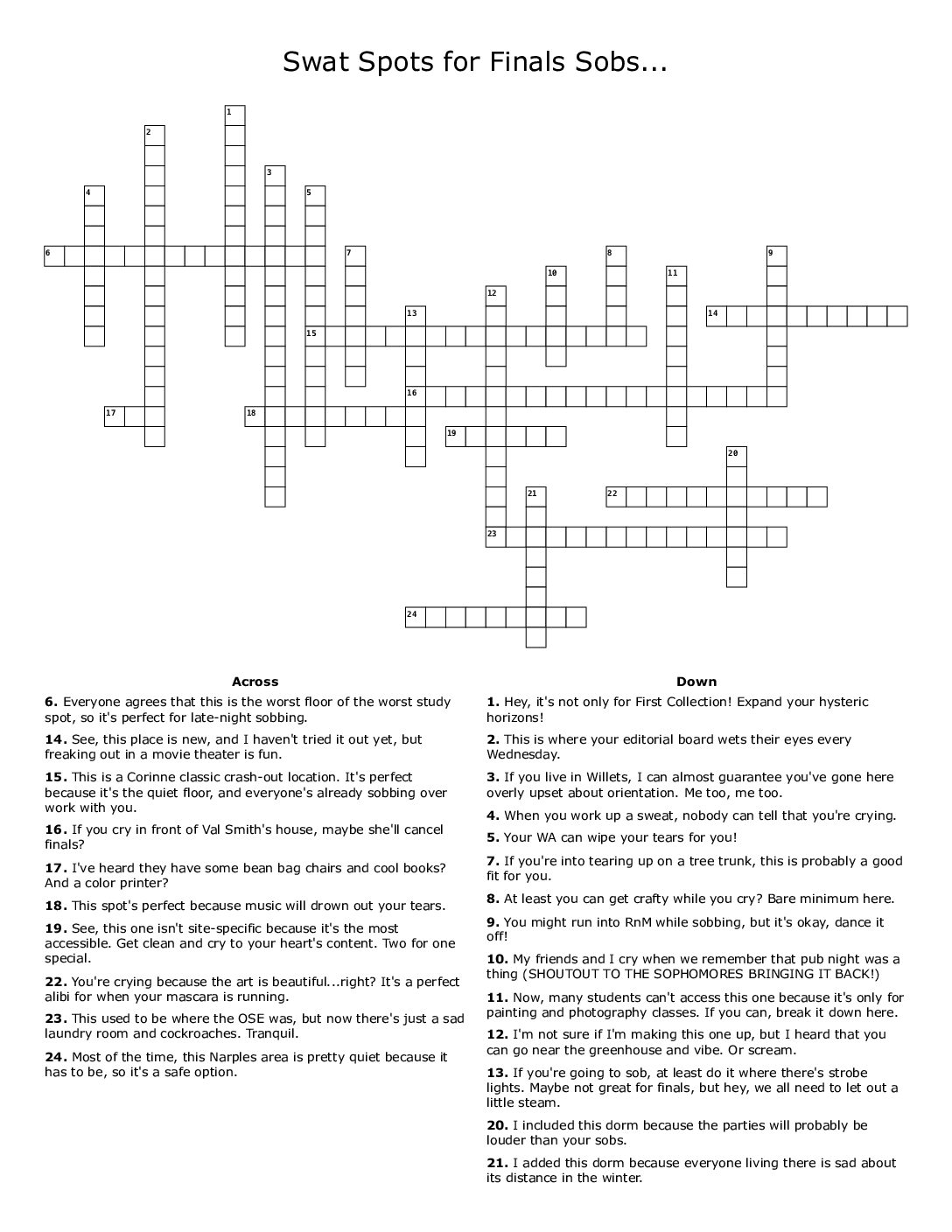“Being a performative male means embracing women, embracing what it means to be a woman in this world, and understanding where they’re coming from,” said Nick Fettig ’26, Contestant 19 and finalist in the Performative Male Contest. “It’s being one with nature, one with women. Being one with those around you and spreading love and peace and genuine interest for people of your world, including women. Have I mentioned that I like women?”
According to Fettig, the more performative one is, the closer to genuine. Fettig has many genuine passions. His favorite feminist is Angela Davis, closely followed by musician Clairo, whose concert shirt he wore to the contest (he did not attend the concert). When asked to name three women, Fettig said, “I cannot. I’m sorry.”
On Sunday, Sept. 21, Fettig was one of 26 Swarthmore students fighting for the title of Swarthmore’s Most Performative Male. The performative male, a recently viral internet label, adopts specific fashion and interests in an attempt to impress women. He might talk at length about feminism, female pop culture icons, and the patriarchy, while positioning himself as “not like other men.” He might rhapsodize about feminism, cutting off a woman as he monologues. Or he might play Clairo on his acoustic guitar to woo a woman, only to ghost her later. While men of decades past took on hyper masculinity to attract, performative men take on a feminized look.
Accessories include vinyls from female artists, matcha lattes, feminist literature, tote bags, acoustic guitars, film cameras, and, in the case of the contest, menstrual products thrown at the largely female audience. The performative male is one of many viral social commentary trends dividing Gen Z on who is allowed to have certain interests or aesthetics and who should be publicly shamed for faking them. What separates a performative male from a catch is genuineness.
Photos by Alexander Vasquez-Jaffe
“Why fear the tote-bag-wielding, matcha-drinking performative male?” asked Rachel Connolly in The Guardian. “At least he makes an effort.” Connolly argues dressing to attract is nothing new. Furthermore, women can be performative too, and pop psychology lumping types of people into “red flags” is not reserved for the labubu-carrying man in the baggy pants. There’s the “finance guys,” the “love-bombers,” the “mommy’s boys,” to name a few. In the online world, snap judgments in dating are made in a mine field.
However, when asked about if being a performative male gives him any advantages with dating, Arfath Hossain ’27 (AKA Contestant 2), expressed outrage. “How dare you ask me that question? How dare you? Absolutely how dare you? Next question.”
So, how does one tell the good from the bad? It may have to be left to trust. Hossain said while other contestants were performative, his heart is pure. He also said men should be taxed to fund free tampons, and Swarthmore should be giving a stipend to women.
“My talent is my huge heart, actually my heart is so big that I’m in danger at times,” Hossain said. “Did you ask me about my stance on women’s rights? Just reiterating, I support women’s rights. And women’s wrongs.”
Hossain’s heart and his displayed copy of Angela Davis’s autobiography were not enough to secure him the title. The winner, Ron Comage ’29, received overwhelming audience support for his Fiona Apple recitation and large vinyl and CD collection. He also pledged to draw a portrait of female musician beabadoobee for every woman in the crowd.
“I just think we should all be more misandrist,” Comage said in the finalist panel round, calling out other contestants for referring to menstrual products with gendered terms, excluding trans men and nonbinary people. “It could really mess up things to see all these men refer to feminine products not menstrual products. It’s almost like watching a minstrel show of women.”




















